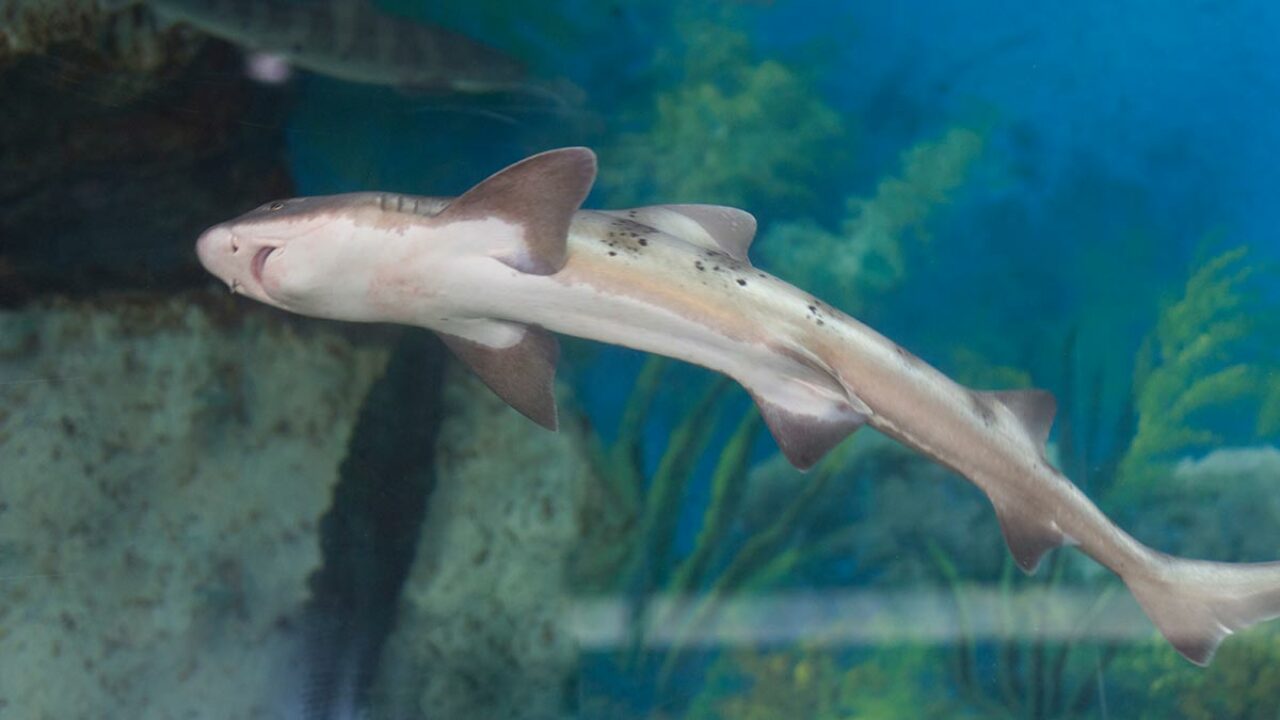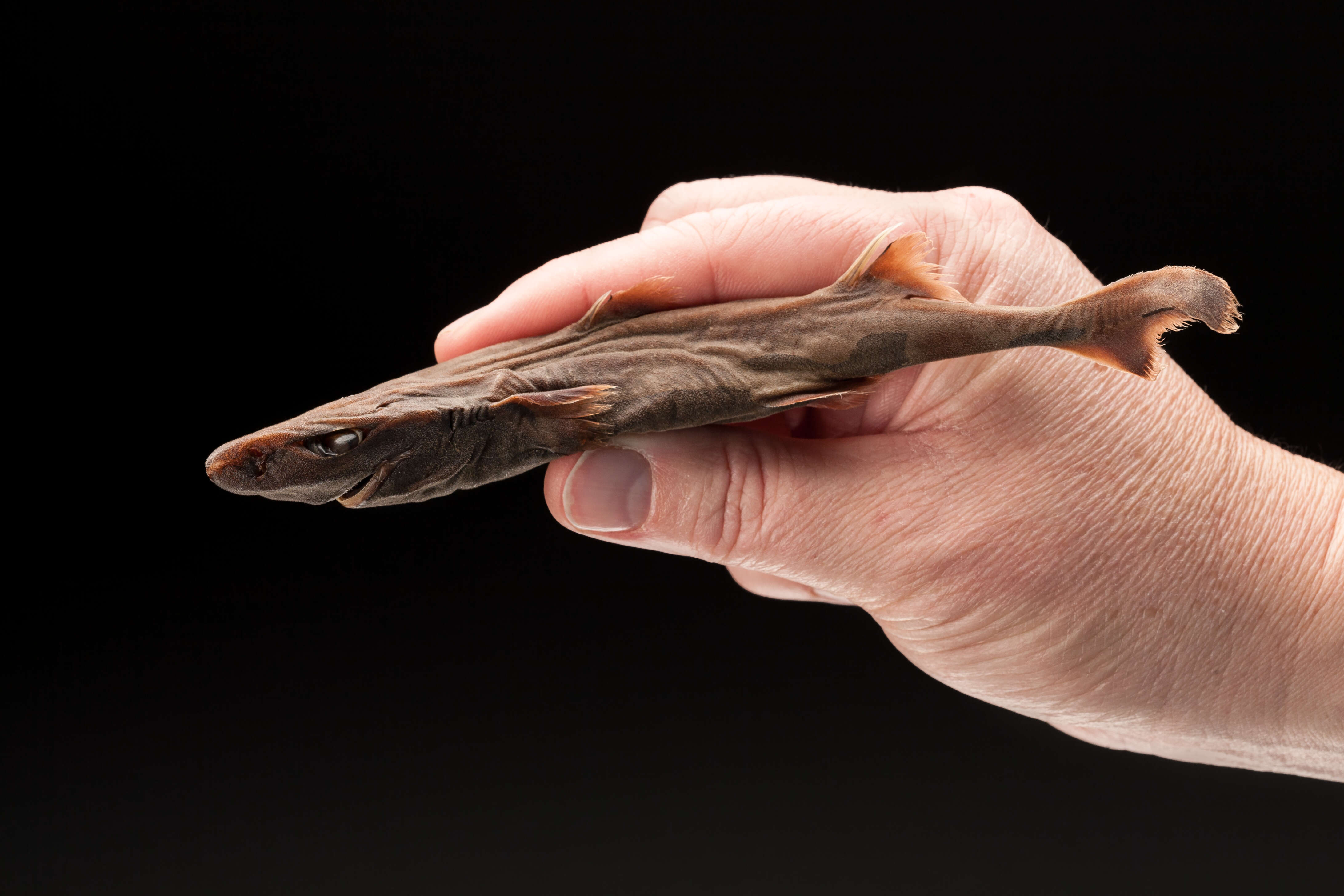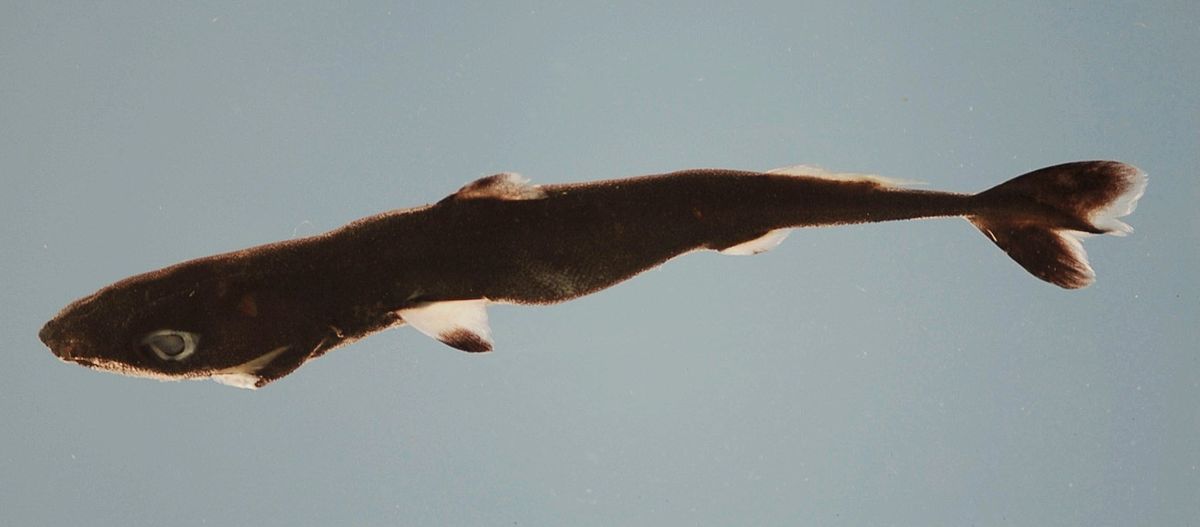Sharks are often associated with being massive predators like the Great White Shark or the Tiger Shark. However, many species of sharks are actually very small. These species are populous and found in oceans all over the world.
The smallest shark in the world is the Dwarf Lanternshark, measuring only 7.9 inches (20 cm) long. It is bioluminescent and lives off the coasts of Colombia and Venezuela in the Caribbean Sea. The Spined Pygmy Shark used to be identified as the smallest shark in the world before the discovery of the Dwarf Lanternshark.
You are reading: Top 8 Smallest Sharks In The World
In this article, we will take a look at the top 8 smallest sharks in the world, their characteristics, and where they can be found.

Top 8 Smallest Sharks In The World
Dwarf Lanternshark

The Dwarf Lanternshark (Etmopterus perryi) is the smallest shark in the world, measuring only 7.9 inches (20 cm) long. It is a member of the dogfish shark family, Etmopteridae, and is found in the Caribbean Sea off the coasts of Colombia and Venezuela.
The shark has a distinctive appearance with a long, wide, flattened head comprising a fourth to a fifth of its total length. It has big, bulbous eyes, which help it see in the dark waters of the ocean’s twilight zone. Like other lantern sharks, the Dwarf Lanternshark has light-emitting organs called photophores along its belly and fins, which help it camouflage when it feeds in shallower water. In darker water, the light attracts smaller animals, which the shark preys upon.
The Dwarf Lanternshark feeds on shrimp and small fish, and it is theorized that the shark uses its bioluminescence to attract its prey. The shark is not significant to commercial fisheries, but could be threatened by mortality from bycatch.
Spined Pygmy Shark

The Spined Pygmy Shark (Squaliolus laticaudus) is a species of dogfish shark in the family Dalatiidae, found widely in all oceans. It is one of the smallest sharks alive, growing no larger than roughly 28 cm (11 in), with this record beaten by the Dwarf Lanternshark.
Here are some interesting facts about the Spined Pygmy Shark:
– The shark has a slender, cigar-shaped body with a sizable conical snout, a long but low second dorsal fin, and an almost symmetrical caudal fin.
– The body of the shark is nearly black to dark brown, with a lighter underside.
– The shark has a large eye, with a diameter of 73-86% of interorbital width.
– The Spined Pygmy Shark feeds on small fish and squid.
– The shark is oviparous, meaning that it lays eggs.
– The Spined Pygmy Shark was one of many new species discovered during the course of the 1907–1910 Philippine Expedition of the U.S. Fish Commission Steamer Albatross.
– The shark is not significant to commercial fisheries.
Read more : The Top 10 Fastest Sharks Found In U.S. Waters And Where You Might Encounter Them
Overall, the Spined Pygmy Shark is an interesting and unique species due to its small size and distinctive appearance.
Pygmy Ribbontail Catshark
The Pygmy Ribbontail Catshark (Eridacnis radcliffei) is a species of finback catshark, belonging to the family Proscylliidae, and is distributed patchily in the western Indo-Pacific from Tanzania to the Philippines.
Here are some interesting facts about the Pygmy Ribbontail Catshark:
Appearance:
– The Pygmy Ribbontail Catshark is one of the smallest living shark species, growing to a maximum known length of 24 cm (9.4 in).
– It has a slender body with a low, ribbon-like tail fin, and is dark brown in color with blackish dorsal fin markings and tail bands.
– The shark has a short, blunt snout and large eyes.
Habitat and Diet:
– The Pygmy Ribbontail Catshark occurs around the edges of continental and insular shelves at a depth of 71–766 m (233–2,513 ft), typically on or near mud bottoms.
– It feeds mainly on small bony fishes, followed by crustaceans and then squid.
– The shark is ovoviviparous, meaning that the eggs develop inside the female’s body, and the pups are born measuring about 10 cm in length.
Conservation Status:
– The Pygmy Ribbontail Catshark is of minimal significance to fisheries, being caught as bycatch in some areas.
– The conservation status of the Pygmy Ribbontail Catshark is currently unknown.
Overall, the Pygmy Ribbontail Catshark is an interesting and unique species due to its small size and distinctive appearance.
Smalleye Pygmy Shark
The Smalleye Pygmy Shark (Squaliolus aliae) is a little-known species of squaliform shark in the family Dalatiidae.
Here are some interesting facts about the Smalleye Pygmy Shark:
Appearance:
– The Smalleye Pygmy Shark is one of the smallest living shark species, growing to a maximum known length of 22 cm (8.7 in).
– It is shaped like a cigar and has a bulbous, pointed snout.
– The shark has a relatively small eye, with a diameter measuring 43–66% as long as the snout.
– The Smalleye Pygmy Shark is brownish-black in color with lighter fin margins and a glowing underbelly.
Habitat and Diet:
– The Smalleye Pygmy Shark is found in water 150–2,000 m (490–6,560 ft) deep near Japan, the Philippines, and Australia.
– It migrates vertically daily, spending the day in deep water and the night in shallower water.
– The shark feeds primarily on midwater squid, krill, shrimps, and small bony fishes such as lanternfish.
Conservation Status:
– The conservation status of the Smalleye Pygmy Shark is currently unknown.
– The shark is not significant to commercial fisheries.
Overall, the Smalleye Pygmy Shark is an interesting and unique species due to its small size and distinctive appearance.
Green Lanternshark
The Green Lanternshark (Etmopterus virens) is a species of dogfish shark in the family Etmopteridae, found in the western central Atlantic Ocean. Here are some interesting facts about the Green Lanternshark:
Appearance:
– The Green Lanternshark has a slender body with a long, thin tail and low, conical dermal denticles on its flanks.
– It can reach a maximum length of 26 cm (10 in).
– The shark is brownish-black in color with a glowing green underbelly.
Habitat and Diet:
– The Green Lanternshark usually occurs on the upper continental slope below a depth of 350 m (1,150 ft).
– It is found in the western central Atlantic, from Texas to Florida (USA), northern Gulf of Mexico, and Nicaragua.
– The Green Lanternshark feeds on small fish, squid, and crustaceans.
Conservation Status:
– The conservation status of the Green Lanternshark is currently unknown.
– The shark is not significant to commercial fisheries.
Overall, the Green Lanternshark is an interesting and unique species due to its glowing green underbelly and its habitat in the deep waters of the western central Atlantic Ocean.
Pale Catshark
The Pale Catshark (Scyliorhinus canicula), also known as the Small-spotted Catshark, is a species of catshark found in the northeastern Atlantic Ocean and the Mediterranean Sea.
Here are some interesting facts about the Pale Catshark:
Appearance:
– The Pale Catshark has a slender body with a blunt head, rounded snout, and small dorsal fin.
– It is light sandy in color with slightly darker saddles and patches, and many dark spots all over its body.
– The shark can grow up to a length of 1 m (3 ft 3 in) and can weigh more than 2 kg (4.4 lb).
Habitat and Diet:
– The Pale Catshark is found primarily over sandy, gravelly, or muddy bottoms from depths of a few meters down to 400 m (1,300 ft).
– It feeds on small fish, crustaceans, and cephalopods.
– The Pale Catshark is one of the most abundant elasmobranchs in the northeast Atlantic and Mediterranean Sea.
Conservation Status:
– The conservation status of the Pale Catshark is currently unknown.
– The shark is not significant to commercial fisheries.
Read more : The 7 Different Types Of Insects
Overall, the Pale Catshark is an interesting and unique species due to its distinctive appearance and abundance in the northeastern Atlantic Ocean and the Mediterranean Sea.
Pygmy Shark
The Pygmy Shark (Squaliolus aliae) is a little-known species of squaliform shark in the family Dalatiidae, found in water 150–2,000 m (490–6,560 ft) deep near Japan, the Philippines, and Australia. Here are some interesting facts about the Pygmy Shark:
Appearance:
– The Pygmy Shark is one of the smallest living shark species, growing to a maximum known length of 22 cm (8.7 in).
– It is shaped like a cigar and has a bulbous, pointed snout.
– The shark has a relatively small eye, with a diameter measuring 43–66% as long as the snout.
Habitat and Diet:
– The Pygmy Shark migrates vertically daily, spending the day in deep water and the night in shallower water.
– It feeds primarily on midwater squid, krill, shrimps, and small bony fishes such as lanternfish.
Conservation Status:
– The conservation status of the Pygmy Shark is currently unknown.
– The shark is not significant to commercial fisheries.
Overall, the Pygmy Shark is an interesting and unique species due to its small size and distinctive appearance. However, due to its little-known status, there is still much to learn about this species.
Atlantic Ghost Catshark
The Atlantic Ghost Catshark (Apristurus laurussonii) is a species of catshark, belonging to the family Scyliorhinidae, found in the western Atlantic, from Massachusetts, Delaware, and the northern Gulf of Mexico, as well as the eastern Atlantic from Iceland, southwestern Ireland, the Canary Islands, Madeira, and South Africa. Here are some interesting facts about the Atlantic Ghost Catshark:
Appearance:
– The Atlantic Ghost Catshark has a slender body with a long, thin tail and small dorsal fin.
– It can grow up to a length of 1 m (3 ft 3 in) and can weigh more than 2 kg (4.4 lb).
– The shark is light brown in color with small, dark spots all over its body.
Habitat and Diet:
– The Atlantic Ghost Catshark is found in depths of 550 to 1450 meters near or at the bottom over upper continental slopes.
– It feeds on small fish, crustaceans, and cephalopods.
Conservation Status:
– The conservation status of the Atlantic Ghost Catshark is currently unknown.
– The shark is not significant to commercial fisheries.
Overall, the Atlantic Ghost Catshark is an interesting and unique species due to its distinctive appearance and habitat in the deep waters of the western and eastern Atlantic Ocean.
FAQS
1. What is the smallest shark in the world?
The Dwarf Lanternshark (Etmopterus perryi) is the smallest shark in the world, measuring only 7.9 inches (20 cm) long.
2. What are some other small shark species?
Other small shark species include the Spined Pygmy Shark, Pygmy Ribbontail Catshark, Smalleye Pygmy Shark, Green Lanternshark, and Pale Catshark.
3. Where are these small shark species found?
These small shark species are found in various locations around the world, including the Caribbean Sea, Pacific and Indian Oceans, western Indian Ocean, eastern Pacific Ocean, eastern Atlantic Ocean, and western Atlantic Ocean.
4. What do these small shark species eat?
These small shark species feed on a variety of small fish, squid, crustaceans, and cephalopods.
5. Are these small shark species endangered?
The conservation status of most of these small shark species is currently unknown, but they are not significant to commercial fisheries.
6. Why are these small shark species hard to study?
These small shark species are deep-water or bottom-dwelling sharks, making them exceedingly rare and difficult for scientists to study. Many of these species have been designated as separate species based upon the discovery of just one animal alone, which is referred to as a holotype.
Source: https://petstutorial.com
Category: Animals










